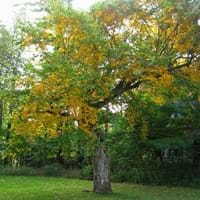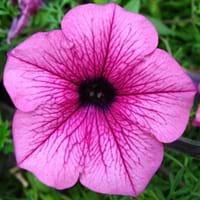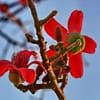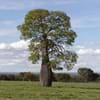Life Span
Perennial
Annual
Type
Tree
Flowering Plants, Shrubs
Origin
Northeastern United States, Mid-Atlantic United States, North-Central United States, Central United States, Canada
South America
Types
it is a type of birch
Grandiflora Petunias, Multiflora Petunias, Wave Petunias, Superbell Petunias, Supertunia Petunias
Number of Varieties
Not Available
Habitat
Hillside, Mountain tops
Terrestrial
USDA Hardiness Zone
4-7
9-10
AHS Heat Zone
7-1
Not Available
Sunset Zone
A3, 1a, 1b, 2a, 2b, 3a, 3b, 4, 5, 6, 7, 14, 15, 16
not provided
Habit
Pyramidal
Not Available
Flower Color
Light Yellow, Light Green
Blue, Pink, Purple, Red, White, Yellow
Flower Color Modifier
Bicolor
Not Available
Fruit Color
Bronze, Sandy Brown
Not Available
Leaf Color in Spring
Green, Dark Green
Golden Green
Leaf Color in Summer
Dark Green
Green
Leaf Color in Fall
Yellow
Green
Leaf Color in Winter
Not Available
Green
Plant Season
Spring, Summer, Fall, Winter
Summer
Sunlight
Full Sun, Partial Sun
Full Sun, Partial shade
Type of Soil
Clay, Loam
Loamy, Sandy
The pH of Soil
Acidic, Neutral
Neutral
Soil Drainage
Average
Well drained
Bloom Time
Early Spring
Fall, Spring, Summer
Tolerances
Not Available
Pollution
Where to Plant?
Ground
Container, Ground, Pot
How to Plant?
Seedlings
Seedlings, Transplanting
Plant Maintenance
Medium
Medium
Watering Requirements
Average Water Needs, Do Not over Water
Keep the ground moist but not water-logged, Requires regular watering, Requires watering in the growing season
In Summer
Lots of watering
Lots of watering
In Spring
Moderate
Moderate
In Winter
Average Water
Average Water
Soil pH
Acidic, Neutral
Neutral
Soil Type
Clay, Loam
Loamy, Sandy
Soil Drainage Capacity
Average
Well drained
Sun Exposure
Full Sun, Partial Sun
Full Sun, Partial shade
Pruning
Prune to half of its height
Cut or pinch the stems, Do not prune during shooting season, Remove dead or diseased plant parts, Remove deadheads
Fertilizers
All-Purpose Liquid Fertilizer, fertilize twice a year
All-Purpose Liquid Fertilizer
Pests and Diseases
Borers, Chlorosis
Aphids, Bacterial Blight, Caterpillars, Gray mold, Leaf spot, Powdery mildew, Root rot, Spider mites, Thripes, Verticillium Wilt, Viruses
Plant Tolerance
Not Available
Drought
Flowers
Insignificant
Yes
Flower Petal Number
Not Available
Not Available
Fragrant Bark/Stem
Yes
Yes
Foliage Texture
Medium
Medium
Foliage Sheen
Matte
Matte
Attracts
Not Available
Butterflies, Hummingbirds
Allergy
Respiratory problems, Skin rash
Not Available
Aesthetic Uses
Landscape Designing, Showy Purposes
Beautification, Bouquets, Showy Purposes
Beauty Benefits
Not Available
Not Available
Environmental Uses
Air purification, Shelter for wildlife
Air purification
Medicinal Uses
No Medicinal Use
Not Available
Part of Plant Used
Bark, Sap
Flowers
Other Uses
Edible syrup, used for making charcoal, Used for making wood alcohol, Used in Furniture
Showy Purposes
Used As Indoor Plant
No
Yes
Used As Outdoor Plant
Yes
Yes
Garden Design
Feature Plant, Shade Trees
Bedding Plant, Container, Edging
Botanical Name
BETULA alleghaniensis
Petunia
Common Name
Yellow Birch
Petunia
In Hindi
Yellow Birch
Petunia
In German
Yellow Birch
Petunie
In French
bouleau jaune
Pétunia
In Spanish
Abedul amarillo
Petunia
In Greek
κίτρινο Birch
πετούνια
In Portuguese
κίτρινο Birch
Petúnia
In Polish
żółte brzozy
Petunia
In Latin
Birch flavum
Petunia
Phylum
Magnoliophyta
Streptophyta
Class
Magnoliopsida
Magnoliopsida
Family
Betulaceae
Solanaceae
Clade
Not Available
Angiosperms, Asterids, Eudicots
Tribe
Not Available
Not Available
Subfamily
Not Available
Petunioideae
Number of Species
Not Available
Difference Between Yellow Birch and Petunia
If you are confused whether Yellow Birch or Petunia are same, here are some features about those plants to help you choose better. Many people think that these two plants have the same characteristics, but one can see Yellow Birch and Petunia Information and learn more about it. Fertilizers required for proper growth of Yellow Birch are All-Purpose Liquid Fertilizer and fertilize twice a year, whereas for Petunia fertilizers required are All-Purpose Liquid Fertilizer. Hence, one should know the basic difference between Yellow Birch and Petunia if you are planning to have them in your garden to enhance its beauty.
<
Flowering PlantsImportance of Yellow Birch and Petunia
Want to have the most appropriate plant for your garden? You might want to know the importance of Yellow Birch and Petunia. Basically, these two plants vary in many aspects. Compare Yellow Birch and Petunia as they differ in many characteristics such as their life, care, benefits, facts, etc. Every gardener must at least have the slightest clue about the plants he wants to plant in his garden. Compare their benefits, which differ in many ways like facts and uses. The medicinal use of Yellow Birch is No Medicinal Use whereas of Petunia is Not Available. Yellow Birch has beauty benefits as follows: Not Available while Petunia has beauty benefits as follows: Not Available.
Compare Facts of Yellow Birch vs Petunia
How to choose the best garden plant for your garden depending upon its facts? Here garden plant comparison will help you to solve this query. Compare the facts of Yellow Birch vs Petunia and know which one to choose. As garden plants have benefits and other uses, allergy is also a major drawback of plants for some people. Allergic reactions of Yellow Birch are Respiratory problems and Skin rash whereas of Petunia have Not Available respectively. Having a fruit bearing plant in your garden can be a plus point of your garden. Yellow Birch has no showy fruits and Petunia has no showy fruits. Also Yellow Birch is not flowering and Petunia is flowering. You can compare Yellow Birch and Petunia facts and facts of other plants too.





